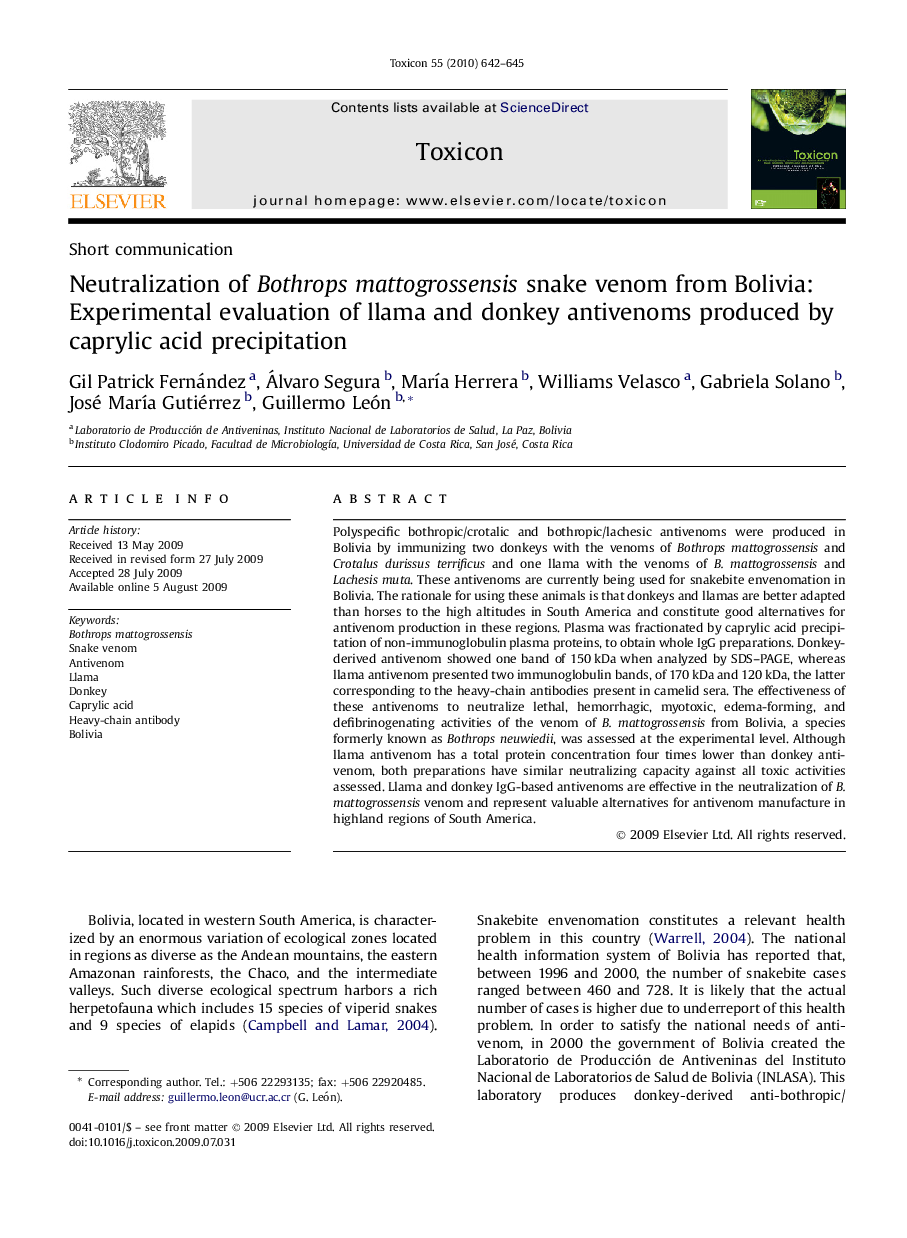| کد مقاله | کد نشریه | سال انتشار | مقاله انگلیسی | نسخه تمام متن |
|---|---|---|---|---|
| 2065366 | 1544179 | 2010 | 4 صفحه PDF | دانلود رایگان |

Polyspecific bothropic/crotalic and bothropic/lachesic antivenoms were produced in Bolivia by immunizing two donkeys with the venoms of Bothrops mattogrossensis and Crotalus durissus terrificus and one llama with the venoms of B. mattogrossensis and Lachesis muta. These antivenoms are currently being used for snakebite envenomation in Bolivia. The rationale for using these animals is that donkeys and llamas are better adapted than horses to the high altitudes in South America and constitute good alternatives for antivenom production in these regions. Plasma was fractionated by caprylic acid precipitation of non-immunoglobulin plasma proteins, to obtain whole IgG preparations. Donkey-derived antivenom showed one band of 150 kDa when analyzed by SDS–PAGE, whereas llama antivenom presented two immunoglobulin bands, of 170 kDa and 120 kDa, the latter corresponding to the heavy-chain antibodies present in camelid sera. The effectiveness of these antivenoms to neutralize lethal, hemorrhagic, myotoxic, edema-forming, and defibrinogenating activities of the venom of B. mattogrossensis from Bolivia, a species formerly known as Bothrops neuwiedii, was assessed at the experimental level. Although llama antivenom has a total protein concentration four times lower than donkey antivenom, both preparations have similar neutralizing capacity against all toxic activities assessed. Llama and donkey IgG-based antivenoms are effective in the neutralization of B. mattogrossensis venom and represent valuable alternatives for antivenom manufacture in highland regions of South America.
Journal: Toxicon - Volume 55, Issues 2–3, February–March 2010, Pages 642–645